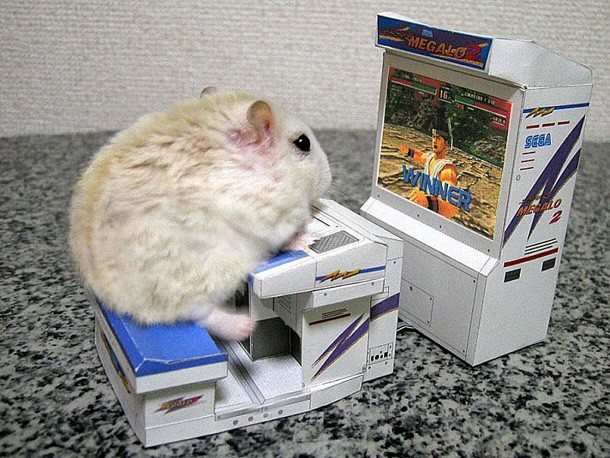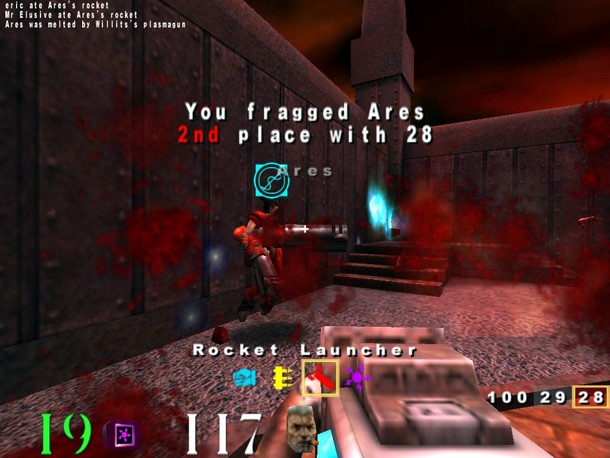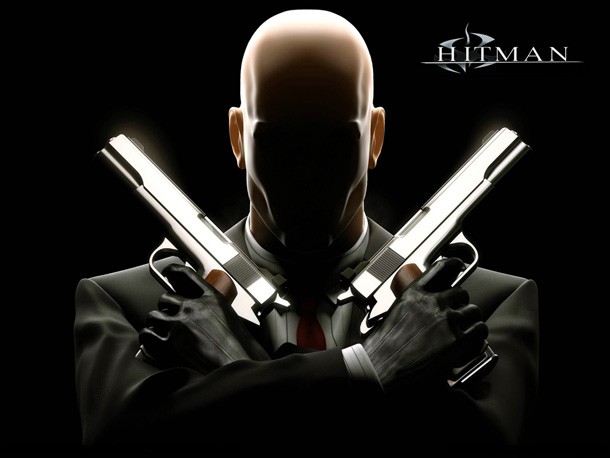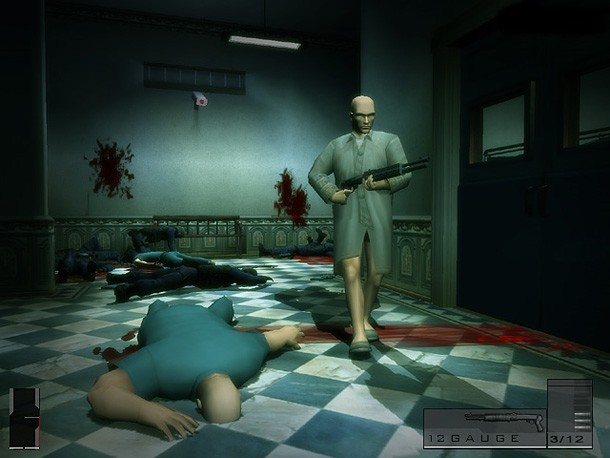My Nixed Picks For The Top 200

Coming up with the list of the top 200 games of all time wasn't easy. Sure, there were no-brainers like Super Mario Bros. and Metroid that no one disagreed on. But other games didn’t fare as well. When there were arguments – and there were plenty of arguments – they stemmed from the difficult task of separating the games that need to be on the list from the games you want to be on the list. The former earn their spot by being revolutionary, influential, or impeccably well made (or all three). The latter are argued for unsuccessfully because, while you enjoyed them immensely, the rest of the room didn’t.
Editors responded to the rejection of their picks in different ways. Some laughed, openly acknowledging the long shot they were proposing. Some were moved by the rebuttals of their fellow editors and ceded the point graciously. Some cried like babies at the lack of Sonic games on the list…well, actually only one editor did that, and I think we all know who it was. It was Tim. Tim Turi.
The following three games were my personal favorites that didn’t make the top 200. The first game I thought had a legitimate reason for being on the list. The second two, not so much – but the fact that they weren’t perfect didn’t sully my fondness of them.
One final note: Despite the cuteness of the image above, these three picks are all horribly violent games. The following pictures alone would probably be enough to horribly scar a child, much less my explicit reveling in what make them so great. Consider yourself warned.

#1: Quake III Arena
For many gamers, their introduction to online gaming was an FPS deathmatch, and in that category, few games can stand up to Quake III Arena. Ingenious level design, spot-on controls, and a vibrant, highly dedicated community of players and modders made Q3A the game of choice for tournaments and LAN parties for countless years.
Some editors argued that Quake 2 should be on the list instead, because it started the multiplayer phenomenon and inspired id to make Q3A a multiplayer-only game in the first place. While I can (and ultimately did) accept that argument, Quake 3 Arena was still the game to perfect the experience, which in my mind made it the more worthy candidate.

Rocket Launcher, huh? Classic!
Q3A also went head to head against Unreal Tournament, the other major deathmatch-oriented FPS of the time. Back then I was actually a big Unreal Tournament fan, and as such, didn’t play much Q3A. But my love of UT hasn’t blinded me to the fact that over the years, Quake kicked Unreal Tournament’s ass. The evidence? In order to stay competitive, Unreal Tournament was re-imagined and released back onto the market time and time again (usually with worse reviews), while Quake III remained the same – and was still more popular among players.

Q3A was one of the first games to promote gender equality. Because women explode just as well as men do.
Quake Live is also essentially Quake III in web browser form. This is where my real playing time with Quake’s multiplayer has been logged, and even with graphics simple enough for Firefox, this game is a blast. But the fact that Quake III can run in a web browser is another reason why I think it deserved a spot on the list, because back in the day it was a benchmark for PC gaming, being one of the first games to require a graphics card. Games that push PC technology are always in danger of being poor sellers (*cough* Crysis *cough*) – by the time the masses have computers powerful enough to run your game, it’s no longer relevant. Quake III not only survived this technology gap, it’s continued to go strong for nearly a decade. And with Quake Live and the upcoming XBLA remake, Quake Arena Arcade, it will undoubtedly be sticking around for the foreseeable future as well.

#2: Hitman 2: Silent Assassin
The Hitman series is a personal favorite of mine, and I fully recognize the fact that I’m in the minority on this one. The franchise has had too many flaws to count, but that never stopped me from loving the crap out of these games.
If you’re not terribly familiar with the series, you play as an assassin. Actually, I think you’re a cloned super assassin created by some government or secret corporation – the storyline has always been absurd to be honest, but it’s the gameplay that makes Hitman fun. Identifying your target for each mission, scouting out their location and routine, and orchestrating the perfect hit require a level of planning sorely missing from most gaming experiences.
Most of the excitement in a Hitman game takes place before and after the actual hit, from infiltrating your target’s domain, and escaping undetected after the deed is done. Unlike stealth games that have you sneaking around in the shadows or inside cardboard boxes however, Hitman often has you hiding in plain sight, thanks to the ability to don disguises.

The only thing missing is Schwarzenegger-esque one liners, like, "Time to do da ting wid my hammah now!"
And while other games have featured disguise systems, Hitman is my favorite implementation of this gameplay mechanic. You can steal the clothing and identity of pretty much anyone in the game (aside from female characters), and NPC AI behaves differently depending on who you are. Dress as a guard, and you’ll have a free ticket to walk around with your gun drawn. Show up as a pizza delivery man on the other hand, and you might get frisked – but you’ll also have better access to your target (if he’s the one ordering the pizza).
The complexity of these roles is sometimes surprising. One level in the series allowed you to set off a building’s fire alarm with a smoke bomb, and then stroll through a metal detector dressed as a fireman. The guards would still open fire if you were carrying a gun – but if you were brandishing an axe (which is a little less professional, but gets the job done), you’d be allowed to pass. Had you shown up as a fireman without setting off the fire alarm first, and you’d be sunk.

FYI, buddy: The game is called "Silent Assassin," not, "Pajama-clad Nutjob with a Shotgun."
From a practical standpoint, the disguises made no sense; you’re a 6+ foot tall white guy with a barcode on the back of his bald head, yet you’d blend in perfectly with, say, a squad of Malaysian security guards. But what counts is that the AI characters responded realistically to your behavior; little details like whether you’re brandishing a weapon, running when you should be walking, or even just loitering for too long in a restricted area could set off their suspicion meter and blow your plan. You have to play the role of your character, or pay the consequences.
Which wasn’t always a bad thing; unlike most games, some of Hitman’s greatest moments are when your intricate scheme goes horribly awry, requiring quick thinking, cool headedness, and some mad assassin skills to survive. As gratifying as a perfectly executed plan is, salvaging a bungled plan on the fly feels even better.
I chose the second game in the series because with the first Hitman, the developers hadn’t decided if it should be an action or stealth game (the action levels sucked), and the game suffered from major interface problems. The sequel refined the gameplay and also introduced the ranking system, the pinnacle of which was the titular Silent Assassin, which limits you to using a maximum of one bullet per mission. A shooter limited to one bullet may sound boring, but it played to Hitman’s strength, which is taking out your targets in creative, and sometimes flamboyant, ways.

Wait a minute, did Agent 47 just kill Santa Claus?!
In the end, the missions make Hitman. Some tap classic films like The Godfather, Scarface, and The Professional for inspiration, while others are incredibly original. Like the one where you can dress up as a caretaker of an English estate and drop a canister of gasoline down a fireplace to toast the Lord of the manor. Or the one where you can dress up as a doctor and purposely botch the open heart surgery of a cult leader on his private island. Or the one where you can shoot an onstage opera singer during his execution scene (by using the crash of the orchestra’s cymbals to mask the sound of your shot), then calmly walk out of the opera house before anyone realizes that he’s actually been executed. Each exotic scenario has multiple solutions like the ones above, making the Hitman series more intellectually stimulating than the standard run-and-gun gameplay of most third person action games.

#3: Sniper Elite
My final pick continues a slightly disturbing trend in my video game guilty pleasures: The only thing better than playing the role of an assassin is playing the role of a sniper assassin. Or in this case a sniper elite.
My reason for picking this game is quite simple. I like playing as the sniper class in video games. They are a pain in the ass in competitive multiplayer games – sometimes bordering on breaking the fun – but there’s something infinitely satisfying about using a single bullet to dispatch an enemy who’s endlessly peppering the battlefield with automatic fire.
But to do the role of a sniper justice, a video game has to offer players more than a weapon with maximum bullet damage and a slow the rate of fire. They have to recreate ballistic properties beyond the typical move-in-a-straight-line-until-you-hit-something programming you see in most shooters. They have to make you think and act like a sniper, and that’s precisely what Sniper Elite does.

At this distance, aiming high is a necessity.
Sniper Elite makes you take an absurd number of variables into account before squeezing the trigger. You have to account for how far your bullet will drop depending on the distance to your enemy, meaning sometimes you have to aim your crosshairs several feet above your his head just to hit him. You also have to adjust for the time it will take your bullet to reach a moving target, which means leading your prey by several more feet. You even have to take into account wind speed and your heart rate before you finally take your shot…all of which make the perfect headshot all the more gratifying.
Sniper Elite also matches the detail-oriented difficulty with a brutal, cinematic flair. Along with every other game of its era, Sniper Elite has a bullet time effect, where the camera follows your projectile along its trajectory, directly into your enemy’s skull. The game featured some otherwise unimpressive graphics, but the simulation of bones and brain spraying out of your enemy in slow motion was a visceral experience few games of the time could match. Max Payne might have created bullet time, but Sniper Elite was the game it was made for.

Actual chunks of the head model are removed from headshots. Eyebrows too, apparently.
While Sniper Elite is always on the verge of beating a dead horse, the game features just enough variety to keep you engaged. The game is at its best, however, when it pits you against other snipers. It captures the essence of Enemy at the Gates, but without the stupidly unnecessary love story – just the slow, cat and mouse game that requires more brains than brawn to best your opponents. Other nice touches add to the strategy, including using artillery strikes to hide the sound of your shot, and the necessity to hide dead bodies so guards won’t find them – unless you want to use a fallen foe to draw more enemies into your web of death.

Sneaking into position to take down an enemy sniper, or napping on a roof? You be the judge.
To top it all off, Sniper Elite also includes a plethora of stats, so you can gauge just how elite of a sniper you are. This includes tallying your number of silent kills, long range covert kills, and the always satisfying two for one kills, which make the one kill headshots of other games feel downright underwhelming.
While all of my picks may have death and dismemberment in common, they all also require strategic planning and using your environment to your advantage, and feature intricate stat-tracking and ranking systems. It may be fun to pretend to kill stuff, but it’s more fun when a game tests your intellect while doing it. These games may have not been the best executed or most influential games, but they were a hell of a lot of fun, and I won’t be forgetting them anytime soon – even if other gamers already have.

Get the Game Informer Print Edition!
Explore your favorite games in premium print format, delivered to your door.
- 10 issues per year
- Only $4.80 per issue
- Full digital magazine archive access
- Since 1991









